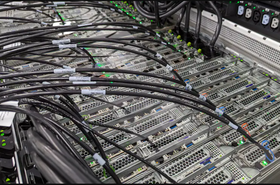The proliferation of digital has generated data in phenomenal capacities, at lightning speeds. From email to social media, mobile banking to connected devices – it’s estimated that 2.5 quintillion bytes of data is created each day. However, for the more than 70 percent of Fortune 500 companies still reliant on the mainframe, correlating this data across the enterprise becomes overwhelming and complex due to the fact that most (if not all) of these entities are wrestling with non-relational databases in these legacy systems.
What some might not realize is that the information in databases like VSAM, Adabas, and IDMS can be a treasure trove for data scientists and can offer valuable details, for instance, on how fast user and supply chain interactions occur, how often, when, where, and with whom. While some organizations might dub this “dark data,” it can be mined and used in a variety of beneficial ways under the right circumstances. In today's continuous race to stay agile and optimize product development and customer relationships, this can be invaluable to overall strategy.
But for many businesses, operational and transactional data that could support Big Data architecture and reporting is often trapped in those legacy databases that don’t integrate with data management systems and products like SQL Server, Oracle Database, or even Db2. To add to the problem, mainframe migration is often initially seen as too expensive and disruptive to pursue, leaving many organizations in a conundrum.
With this, it’s important to recognize some of the ways a modernized environment can support Big Data architectures that are needed by today’s enterprises.
Real-time analytics for data-driven decisions
Data-driven decision making is an essential tool for today’s organizations. Unfortunately, this can be difficult for enterprises that rely on mainframes, in which complex and decades-old data structures reign supreme. Sorting through massive amounts of unstructured or non-relational data in a way that modern BI tools can consume can be incredibly difficult, if not impossible. As a consequence, these businesses rely on old information from some of their most critical systems – which translates into competitive disadvantages.
So, how does modernization fit into retrieving insights? By modernizing the mainframe and migrating legacy data to modern DBMS, teams can more easily access information, enhancing the quality of data, while delivering real-time data access across multiple systems. This will allow end users to better navigate and harness the power of data-driven decisions, unhampered by inflexible legacy systems.
Integration and reusability
The majority of mainframes and legacy applications were built with scalability and reliability as top priorities – integration across systems and reusability of data were lower on the list. However, today’s outstanding growth in data processing power, data visualization, data storage and more, paired with the need for organizations to use cloud-native platforms like CRMs and CDPs, has made it more critical than ever for organizations' mainframe data to interact across all tools and systems.
By modernizing legacy systems, organizations can alleviate additional bottlenecks and silos within the data, and create more reusability with the data, which lessens the response time to emerging opportunities and risks, allowing organizations to remain competitive.
Security and compliance
Some legacy systems were created in the dawn of the internet era, and certainly weren’t designed to keep up with today’s ever-evolving and stringent compliance standards like internal audits, GDPR and HIPAA. Many organizations turn to customization after customization to help push themselves into compliance, but these solutions are expensive, restrictive, and rarely well documented.
The result is that companies will continue to be in positions of liability as government regulations and compliance standards evolve, inevitably towards greater strictness. And, for the IT department, timely discovery and rapid response to security events are essential and real-time visibility is required. With these non-negotiable factors in mind, modernization has created more visibility and transparency of data across the entire organization.
Looking ahead: Legacy data and systems will constrain teams
Most enterprises know that system modernization is inevitable – it’s likely why 87 percent of today’s organizations have plans to modernize at least one legacy system in the next 12-24 months. As time passes, dealing with legacy systems is more and more difficult.
Expertise becomes less available due to an aging workforce, application development backlogs grow, and more money is thrown away that could be spent on projects to improve IT efficiency. Doing nothing or delaying modernization will also drive up costs in recurring license fees, hardware maintenance, facilities, and staffing. Legacy modernization is critical to unlocking legacy data, creating more agility in the organization, millions of dollars in savings, improved application performance, and portfolio optimization.





